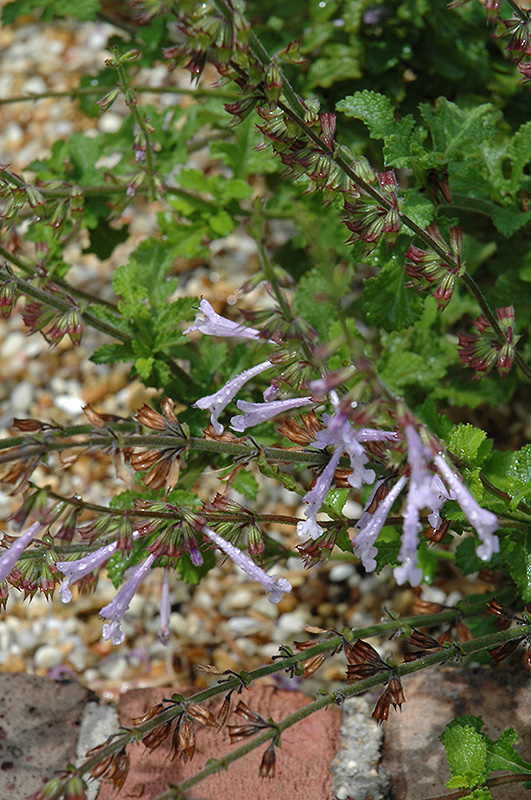Plant Height: 14 inches
Flower Height: 24 inches
Spacing: 18 inches
Sunlight:
![]()
Hardiness Zone: (annual)
Description:
A sub-shrub, coastal variety producing pale blue-violet tubular flowers from spring until fall; foliage is deep green, lyre shaped and deeply lobed; a beautiful addition to borders, containers; does well in dry gardens with lots of sun
Ornamental Features
Coastal Blue Sage has masses of beautiful spikes of powder blue tubular flowers with violet overtones rising above the foliage from late spring to early fall, which are most effective when planted in groupings. The flowers are excellent for cutting. Its attractive serrated lobed leaves remain dark green in colour throughout the season.
Landscape Attributes
Coastal Blue Sage is an herbaceous annual with tall flower stalks held atop a low mound of foliage. Its relatively fine texture sets it apart from other garden plants with less refined foliage.
This is a relatively low maintenance plant, and is best cleaned up in early spring before it resumes active growth for the season. It is a good choice for attracting bees, butterflies and hummingbirds to your yard, but is not particularly attractive to deer who tend to leave it alone in favor of tastier treats. It has no significant negative characteristics.
Coastal Blue Sage is recommended for the following landscape applications;
- Mass Planting
- Border Edging
- General Garden Use
- Container Planting
Planting & Growing
Coastal Blue Sage will grow to be about 14 inches tall at maturity extending to 24 inches tall with the flowers, with a spread of 24 inches. When grown in masses or used as a bedding plant, individual plants should be spaced approximately 18 inches apart. Although it's not a true annual, this plant can be expected to behave as an annual in our climate if left outdoors over the winter, usually needing replacement the following year. As such, gardeners should take into consideration that it will perform differently than it would in its native habitat.
This plant should only be grown in full sunlight. It is very adaptable to both dry and moist growing conditions, but will not tolerate any standing water. It is not particular as to soil pH, but grows best in sandy soils, and is able to handle environmental salt. It is somewhat tolerant of urban pollution. This species is not originally from North America. It can be propagated by division.
Coastal Blue Sage is a fine choice for the garden, but it is also a good selection for planting in outdoor pots and containers. With its upright habit of growth, it is best suited for use as a 'thriller' in the 'spiller-thriller-filler' container combination; plant it near the center of the pot, surrounded by smaller plants and those that spill over the edges. Note that when growing plants in outdoor containers and baskets, they may require more frequent waterings than they would in the yard or garden.

